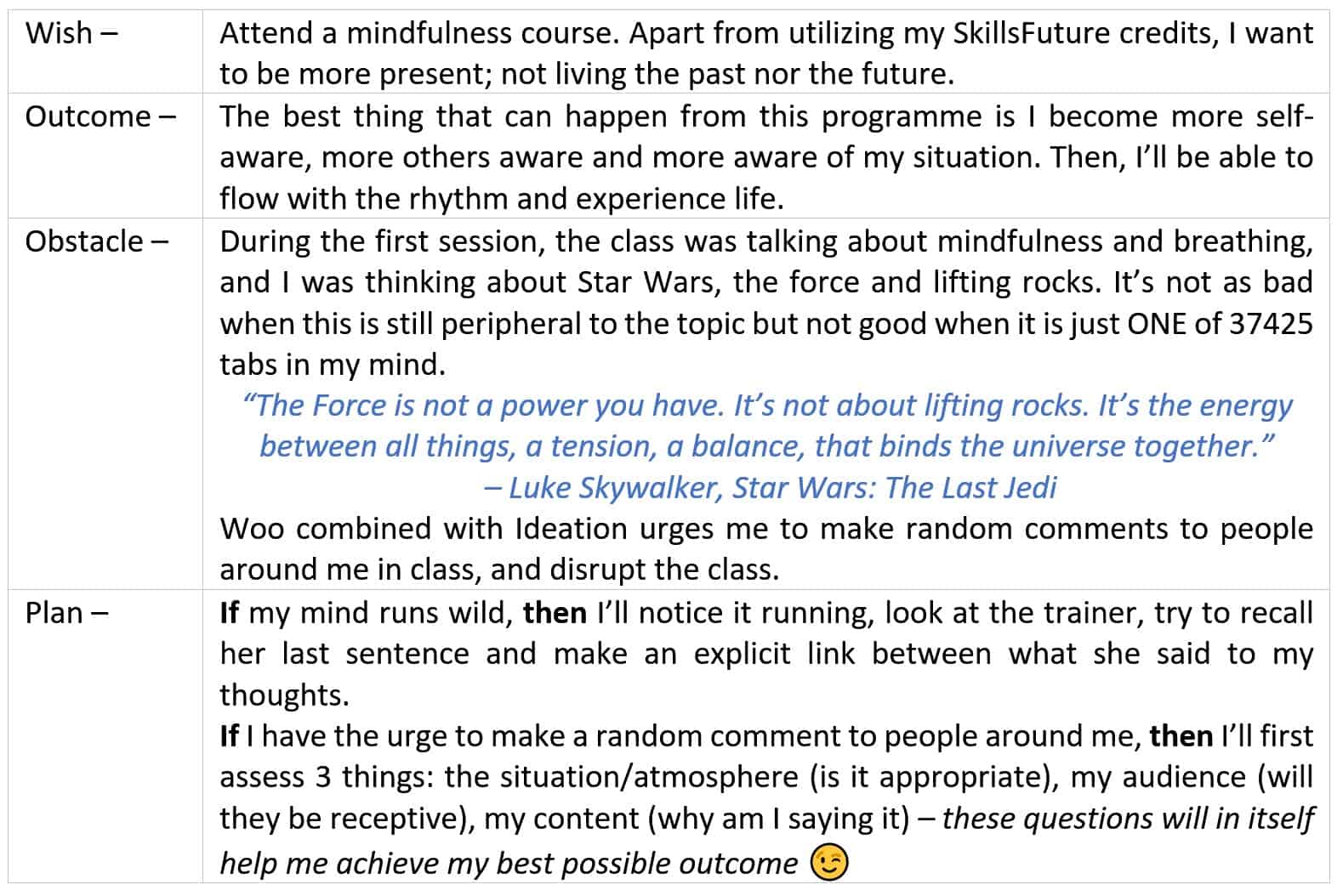
How often have you set a goal, something happens and then you fail to achieve your goals? What if I told you that there’s a model which would help you to greatly increase your chances of achieving your goals? Yes, I’m talking about WOOP.
A Little Exercise
Let’s try a little observation exercise:
- Think about someone or something you like. Think about how it looks, how it smells and how it makes you feel. Why do you like it so much?
- Think of someone or something you dislike. Think about how it looks, how it smells. Coming closer and closer to you, you feel a negative emotion stir within you and you recall why you dislike it so much.
Now, recall your expressions during the exercise. Pay close attention to your eyes. Feel free to repeat the exercise if you cannot remember.
Notice when we think about the positive, our eyes glaze over, as in a dreamy effect. When we think about the negative, our eye becomes more focused and determined. Which do you think puts us in a more productive state to get things done? This is the upside of negative thinking. It makes us more risk-aware and able to devise a mitigation plan. In our volatile, uncertain, complex and ambiguous (VUCA) world where many things are undefined, being an eternal optimist and believing we will score with every try, will bring us great disappointment. The surest thing we can plan for is to build our resilience and how to bounce back.
Introducing WOOP
What is WOOP?
WOOP stands for:

This concept comes from “Rethinking Positive Thinking” by Gabriele Oettingen, a psychologist at New York University. In her book, she talks about how Mental Contrasting with Implementation Intentions help people achieve their goals more effectively than merely having a wish and a traditional straight-forward plan (to succeed). Remember how our eyes glaze over when we think about something positive as if we are daydreaming? Contrasting the best outcomes against the current situation and possible obstacles will allow us to formulate a concrete plan.
“A goal without a plan is just a wish” – various
WOOP with Strengths
Here’s where our strengths (and weaknesses) come in.
If we take a closer look at our best outcome, it will likely require us to flex our strengths, maybe even a combination of it. And if we recognize a self-sabotage as an obstacle, chances are that it is a misuse of our top talent themes. If you have been reading Strengths Alchemy for some time or familiar with the Strengths language, you will know we have just identified balconies and basements of our talent themes. For more information read: Are you Self Sabotaging with this misuse of strengths?
So, when devising our “If… then …” plans, it would best serve us to put our top talent themes to practice and yield them effectively as strengths. Simply because we are naturally good at it, we like to do it and even yearn to do it, we WOOP up our chances of success.
Here’s my WOOP for the start of 2018:

Interested to put all these into practice? I will be conducting a practical workshop called “WOOP Your Strengths” for the Singapore StrengthsFinder Network sometime this year. Keep your eyes peeled for it!
Meanwhile here’s wishing all Strengths Alchemy readers a WOOPing successful 2018!
